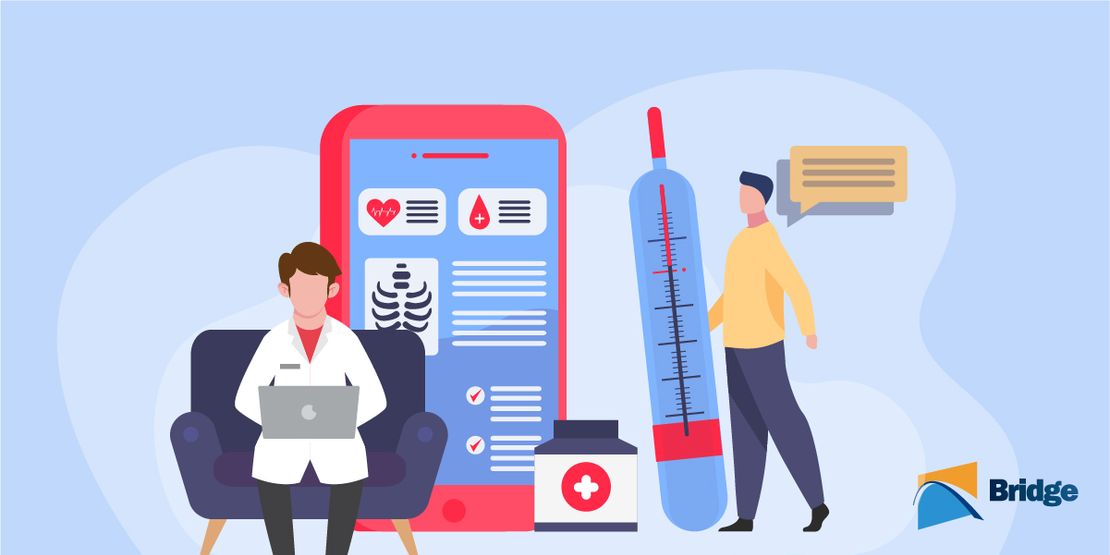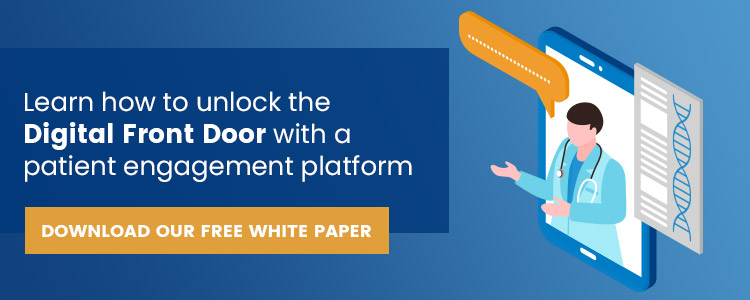Increasing the Efficacy of Digital Care Management Platforms
- The Bridge Team
- January 03, 2022

Technological innovation and demand in healthcare are driving the need for patient-centered digital care management. Being able to effectively support patients when they need it and at the right time can help manage chronic issues and aid in individuals reaching their health goals quicker. Below we outline actions providers can take to engage patients with digital tools to achieve better outcomes.
A Seamless User Experience
When first using a digital tool, a poor user experience that lacks personalized content can harm continued usage.
A clear, readable user interface is important but the overall experience goes deeper than design choices. Even after receiving instructions on how to access a care management platform, many people can forget or simply not understand how to log in. If this happens, a quick email or phone reminder can help them to opt-in. It also shows the patient you are taking time for their care.
Once logged in, asking for some basic information will help further personalize their interactions with your digital care management platform. Use their data to personalize the experience and honor their communication preferences. Informing patients how the platform works, giving step-by-step instructions, and guiding them through the process can give patients more confidence in using the platform and simplify the patient journey.
Personalized Digital Health Management
Effective digital care management should be more than a standard approach; it must consider the patient’s individual needs and preferences.
Providers should ask patients how they wish to be contacted – whether through text, email, call – and honor those communication preferences. A digital care management platform should also supply as much relevant clinical data as possible. Anything that could contribute to personalizing their care should be considered.
The timing of information is also key. If the patient is preparing to go into surgery, make sure they have the necessary information pre-visit on how to prepare beforehand. Post-visit, follow up with things like medication reminders, personalized patient education, and how to keep track of symptoms. Incentivize them to keep engaging with digital tools by improving access to health information. Digital health education doesn’t have to be a slog of endless unreadable medical journals, it’s possible to have videos or interactable experiences like quizzes.
Finally, care isn’t only about what happens in the time surrounding a visit. Digital health platforms can promote preventative tools as well. It’s easy to push resources only towards those who are high-risk but low and medium-risk patients can receive a multidisciplinary approach to care. For example, include patient information from other doctors, physiotherapists, and nutritionists.
Goal-Oriented Care
Health-related behavioral change is a big hurdle for many. Aiding patients in managing chronic illnesses or in their post-operative recovery is integral for achieving the best overall outcomes.
Setting goals or milestones for patients to reach can help drive them to make these behavioral changes, however, it must be done in the right way. The difficulty of the goal, the personal reasons for it, and even the way the goal is phrased can all influence the likelihood of someone working towards achieving it. For instance, using “approach” goals instead of “avoidance” goals. An example could be “I’m going to go for a run today” as an approach goal versus “I’m not going to sit down all day” as an avoidance goal. Both have similar results, but approach goals are met with greater positive thinking and self-evaluation whereas avoidance goals are met with more negative emotions and fewer positive thoughts[¹]. Rewarding goals that are met further incentivizes health-related changes in behavior – even simple things such as a congratulatory message on the platform or a medal that’s been earned.
Another way to assist in patient goal achievement is to understand the personal motivations for it. Intrinsically motivated goals are inherently rewarding for the individual[¹], so gaining an understanding of the patient’s reasoning will help them take measurable steps towards achieving that goal.
Gathering Patient Feedback
In the pursuit of personalizing and engaging patients in digital health care management platforms, collecting patient-reported outcomes should be a key component of the patient journey post-visit. To even get patients to consider giving feedback, they must feel that the digital tools they used were effective and beneficial to their care. Using a feedback survey or asking questions after a visit is an effective means for providers to further customize and tailor their platforms to people’s specific needs.
Patient-centered care is now the norm and using digital care management platforms can be an effective mean to augment and improve the overall healthcare experience – if done correctly. The above strategies are some examples of how to effectively leverage digital tools to increase usage and engagement.
- Bailey, R.R. (2017). Goal Setting and Action Planning for Health Behavior Change. [online] American Journal of Lifestyle Medicine. Available at: https://www.ncbi.nlm.nih.gov/pmc/articles/PMC6796229/
